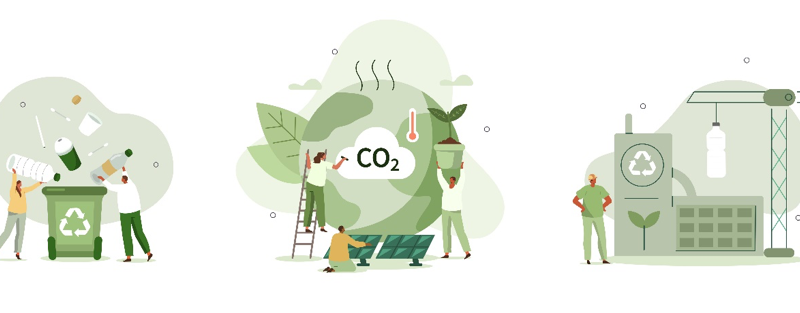
The climate clock ticks: Europe’s circular response to an urgent crisis
In November 2019, the European Parliament declared a climate emergency, calling on the European Commission to align all its proposals with the 1.5°C target. In response, the details of the Green Deal were revealed on December 11, 2019 by Ursula von der Leyen, who had become President of the European Commission a few months earlier. “Our goal is to reconcile the economy with our planet, to reconcile our mode of production, our mode of consumption, with our planet and make it work for our citizens.” The Parliament approved the Green Deal on January 15, 2020 in a resolution that received 482 votes. With a budget of €503 billion to support green initiatives, this investment plan covers various regions of the EU, with a focus on equitable geographical distribution of funds. It proposes an ambitious strategy to make Europe climate-neutral by 2050.
The Green Deal represents a program for the structural transformation of the European economy based on significant investment programs. As President von der Leyen stated in the European Parliament on December 11, 2019, “The European Green Deal is not just about emissions. It is about boosting innovation, ensuring quality food, and modernizing mobility. It will create new businesses and new markets across Europe.”
The circular economy as a strategic lever of the Green Deal
The circular economy (CE) is presented as a strategic lever to achieve the carbon neutrality goals of the Green Deal. It aims to decouple economic growth from increased resource use by adopting a model of sustainable production and consumption. The principles of the CE – reduce, reuse, recycle, and recover – are designed to keep products and materials in use for as long as possible, thereby reducing pressure on natural resources.
The CE offers tangible ways to reduce carbon emissions and move the European Union towards carbon neutrality. For example, material recycling decreases dependency on resource extraction, which is highly energy-intensive and polluting. Initiatives such as designing durable and repairable products reduce the frequency of replacement and, consequently, the consumption of raw materials and energy. Additionally, the CE promotes innovations such as the development of recyclable composite materials or the implementation of deposit systems for packaging reuse.
Challenges in implementing the circular economy
The transition from a linear to a Circular Economy (CE) in Europe poses significant challenges. Firstly, the shift to a CE requires substantial investments in new technologies, infrastructure, and training. Companies often face high costs to adapt or replace their production processes and supply chains. They also need to rethink the innovation process by integrating recycled materials to reduce the impact of their products on the environment throughout the whole supply chain (such as the BIOPALETTE project. BIOPALETTE is an industrial first, with an environmental and circular impact, of a thermo-moulded one-piece euro-pallet made from recycled cellulose fibres and biosourced plant fibres, giving rise to a high-performance lignocellulose fibre industry). However, they often get caught up in the “daily grind” and fail to fully embrace true circular strategies.
Secondly, adopting sustainable consumption practices within the framework of the CE represents a major change for consumers. This requires a shift in purchasing and product usage habits, prioritizing products designed for reuse, repair, or recycling. It involves promoting responsible consumption where individuals are encouraged to consider the environmental impact of their purchases and opt for less harmful alternatives. It also means reducing the overall quantity of goods consumed, prioritizing quality and durability over quantity and novelty. This challenge is primarily behavioral and likely the most difficult. It requires awareness campaigns and education to transform societal values and behaviors.
Thirdly, establishing a supportive regulatory framework is crucial. Current legislation does not always support CE initiatives, and there can be a lack of harmonization of standards at the European level, particularly complicating recycling, reusing, and repurposing issues.
The successful implementation of the European Green Deal and broader adoption of the Circular Economy depend on collective action. To overcome the challenges ahead, it requires coordinated efforts from all stakeholders, including policymakers, businesses, and consumers. By working together to promote sustainable consumption, invest in circular technologies, and align regulations to support circular practices, Europe can lead the way toward a sustainable future, achieving its ambitious goals for environmental preservation and economic transformation.




